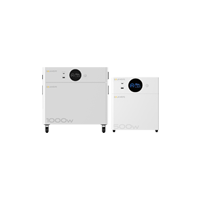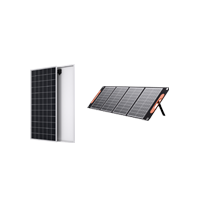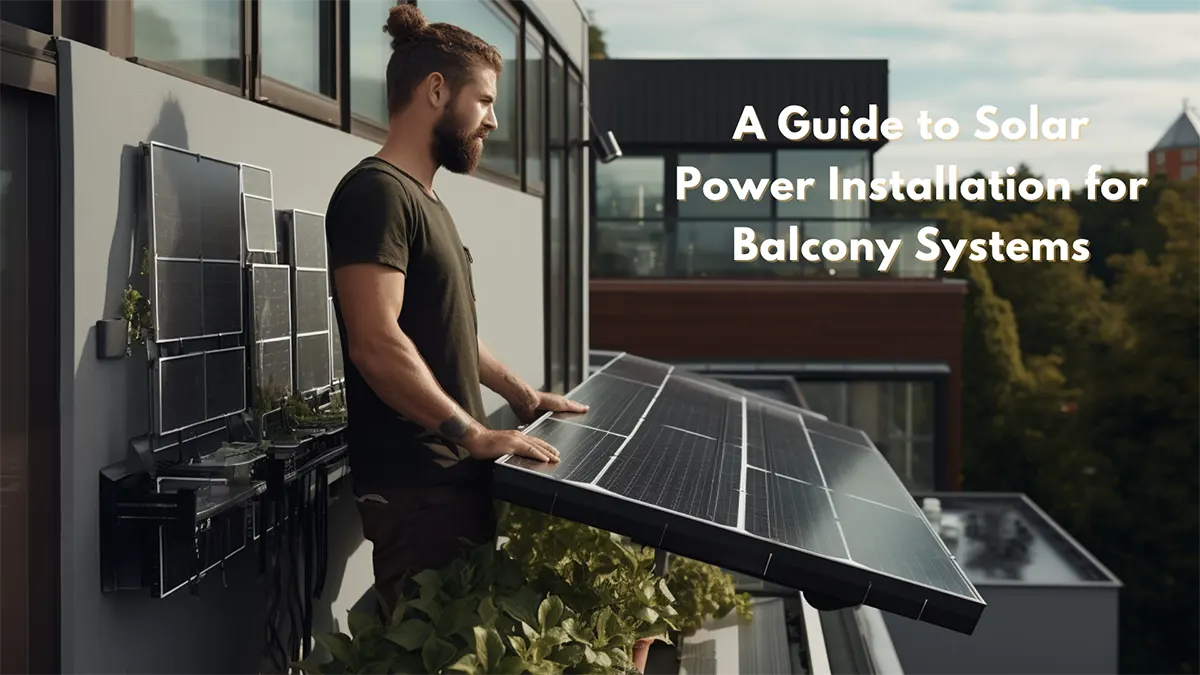On-Grid Solar System, Products Related
A Guide to Solar Power Installation for Balcony Systems
Solar power installation is a term that often evokes images of expansive fields of panels or large rooftop setups. However, the renewable energy landscape is evolving, offering solar power installation solutions tailored to the urban apartment dweller. Balcony solar systems are stepping up as the unexpected hero for sustainable urban living.
Table of Contents
- Balcony Solar Systems: Revolutionizing Solar Power Installation in Compact Living
- Breaking Down the Solar Power Installation for Balcony Systems
- Step-by-Step Installation
- Key Considerations for Effective Energy Harvest
- Embracing the Future of Urban Solar Power Installation
- FAQs
Balcony Solar Systems: Revolutionizing Solar Power Installation in Compact Living
With the majority of the world gravitating towards urban habitats and apartments becoming the norm, innovations in solar power installation are keeping pace. Enter the balcony solar system – a compact, user-friendly alternative to traditional setups, designed specifically for apartments.
When I lived in a high-rise, the idea of solar power installation seemed distant, given the lack of space. The advent of balcony solar systems is a testament to the industry’s commitment to making solar energy accessible to everyone, regardless of their living situation.
Breaking Down the Solar Power Installation for Balcony Systems
At the heart of this system are the solar panels and a micro inverter. The choice of panels is diverse, catering to various preferences and needs:
- Regular Solar Panels: These are your traditional, robust solar panels. While they are heavier and demand a bit more effort in installation, they are budget-friendly and come with extended warranties. Installing these panels on my friend’s balcony was a bit labor-intensive, but the long-term benefits were evident.
- Portable and Flexible Solar Panels: These are for those who prioritize convenience. Lighter in weight and easy to install, they’re perfect for those who move frequently. Their main downside is the higher cost and shorter warranty period.
Step-by-Step Installation
Regardless of the panel type, the core installation process is quite straightforward:
- Mounting the Panels: Regular panels require a bracket setup, which is then affixed to the balcony railing. Portable and flexible panels, thanks to their design, can be attached directly using Velcro or simple tie-back methods.
- Micro Inverter Setup: This component can be positioned on the railing or any convenient spot on the balcony where has ample sun exposure.
- Connecting the Dots: Link the panels to the micro inverter.
- Powering Up: Finally, connect the micro inverter to the building’s electrical grid, and you’re set.
Key Considerations for Effective Energy Harvest
Orientation is Key
For any solar setup, sun exposure is paramount. Ideally, a south-facing balcony would ensure maximum sunlight absorption, thereby optimizing energy production. When I resided in an apartment with a west-facing balcony, the panels did soak up the afternoon sun, but the efficiency was not as high as a south-facing one.
Potential Limitations
It’s essential to recognize that balcony solar systems might not be for everyone. If your balcony doesn’t receive ample sunlight due to its direction or obstructions like other buildings, the system’s efficacy can be compromised.
Embracing the Future of Urban Solar Power Installation
Balcony solar systems are breaking barriers, proving that sustainable energy solutions are within reach, even for those in urban apartments. It represents a paradigm shift in how we perceive solar power installation in urban areas. If your balcony and enthusiasm are ready, the sun is waiting to be harnessed!
FAQ
Q1: Can I install a balcony solar system in any apartment?
A: While the system is designed for most apartment balconies, it’s important to ensure that your balcony receives adequate sunlight, preferably facing south for optimal energy harvest.
Q2: What’s the main difference between regular panels and portable/flexible ones?
A: Regular panels are traditional, more robust, and come with extended warranties but are heavier. Portable and flexible panels are lightweight and easy to install but may have higher costs and shorter warranty periods.
Q3: Do I need professional help for solar power installation on my balcony?
A: The balcony solar systems are designed to be user-friendly, and most individuals can install them on their own. However, if you’re unsure or need assistance, seeking professional help might be beneficial.
Q4: Is the energy generated from these panels enough to power my entire apartment?
A: Balcony solar systems are supplemental in nature. While they can offset your energy costs and reduce your carbon footprint, they might not produce enough power for an entire apartment’s needs.
You can check one of our user’s experience here: Apartment Solar Systems: 1 Year Results
Q5: What happens if my balcony faces a direction other than south?
A: While south-facing balconies are ideal for solar power harvest, other directions can still produce energy, though potentially at reduced efficiency. It’s always good to monitor the sun exposure your balcony receives before installing.
More to Read about Balcony Solar System
The Pros and Cons of Balcony Solar System
Can I Put Solar Panels on My Balcony
Solar Power Solution for Apartment Balconies
Powering Your Apartment with Balcony Solar Panels without Battery
Are Balcony Solar Systems a Worthwhile Investment
Balcony Solar System Installation (Bracket Version)
Power Your Apartment with Sunlight from Balcony Solar System




